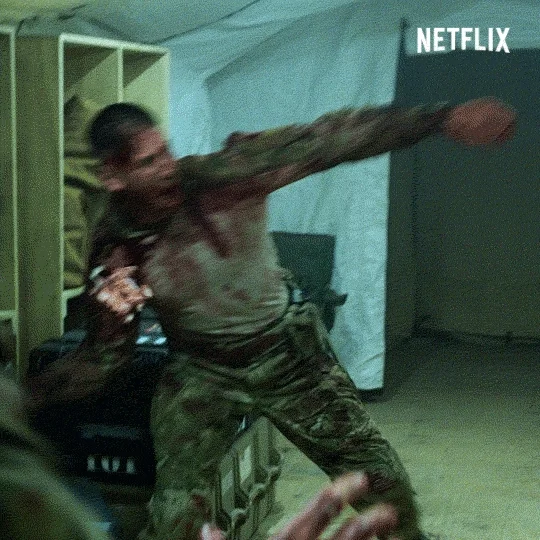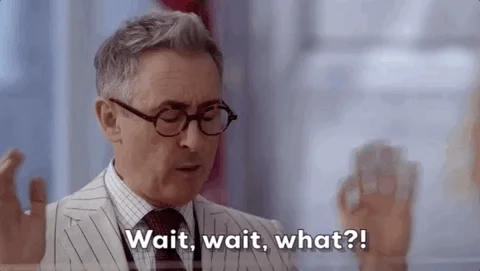Banks that are unable to borrow from other banks in the fed funds market may borrow directly from the central bank’s discount window paying the federal discount rate.
Sorry, what did you say about your anium? Mislaid? 2.5 tons of it?
Well, good for us, then.

He begged for water and his condition continued to deteriorate, but the coaches didn’t provide water or contact the trainer or emergency medical personnel, according to the lawsuit. Brace left and tried to drink from an outdoor water fountain that was not working. He also tried to get into a building but could not, and he collapsed. About 45 minutes later, the coaches found him dead with his hands clenched in the grass and dirt, according to the suit.

None of the explanations I have been given for these shortages make sense. Aoxicillin has been in chronic back-order status for months, Adderall likewise. Most generic eye drops, pain killers, antibiotics, especially those in liquid form, are very hard to find. I want to blame Covid, but that doesn’t hold water. I am not even sure price gouging pharma assholes are to blame. It just makes no sense, but it makes a hard job that much harder.
California is already working on manufacturing some drugs on their home turf, but I wish the overall situation were better. It’s becoming more difficult to find combo drugs like Seretide/Advair for my asthma in TJ, and it seems like it’s effecting the foundation drugs, Fluticasone and the stuff in Albuterol/Salbutamol emergency inhalers, too. ![]()
The new report finds that nearly 80% of manufacturing facilities that produce active pharmaceutical ingredients – the key ingredients that give a drug its intended effect – are located outside of the U.S., with the number of China-based manufacturers registered with the FDA more than doubling from 2010 to 2015.
Outsourcing production to India and China means the U.S. is vulnerable to global catastrophes and at the whim of market forces. If the U.S. faces another pandemic or global crisis, it could experience even more serious supply chain issues with key pharmaceuticals.
This is the explanation I hear most often, “It’s the Chinese” kind of thing. Does not entirely make sense, although currently it does seem the Chinese manufacturing sector is in some trouble. I suspect it’s multifactorial, fucked up supply chain, disinterested companies (especially since a lot of the drugs shorted seem to be less expensive generics with lower profit margins), complicated by dated factories more expensive to maintain. Overall, my staff and I have to spend an increasing amount of time just trying to find the meds our patients need in a market that seems set up to make that difficult.
You’re right, it doesn’t. Remember the concerns about factories in Puerto Rico after Hurricane Maria? Countries in the EU have been moving to restore local production for a while now, and I’m not sure about Canada’s level of exposure to this manipulation. It is intentional:
It’s here as well. Our biggest generics manufacturer, Apotex, manufactures in Ontario ![]() , Mexico and India. They do make some of the ones mentioned, but we have shortages.
, Mexico and India. They do make some of the ones mentioned, but we have shortages.
The government maintains a list of reported shortages. If you’re out to eliminate whether a shortage is due to ![]() /
/ ![]() systemic differences, that might be a start.
systemic differences, that might be a start.
I hadn’t heard of any here so I looked it up.
Apparently there is. And it’s because medicine is too cheap.
Last I checked the biggest chemical company in Ireland spent about 40billion in stock buybacks and reverse takeovers in the last few years.
And nothing or next to on research. Oh and they laid off a stack of workers.
Low prices, gotya bud, low prices. Sure.
WTH. (╯°□°)╯︵ ┻━┻
Tested negative on Saturday, after two weeks of COVID. Tested negative Sunday, Monday. Skipped Tuesday. Tested today. Positive. Second test today, negative.
┐('~`;)┌
I don’t even.
Also, I have some symptoms persisting I won’t describe here, which are unexpected. Of course I used the web to do some research - and yeah, scientific sources, not just random internet junk.
Now I need diagnostics to rule out the possibilities of schistosomiasis, cancer, and COVID being responsible for the symptoms in question.
Seriously, what the fuck.
I am really, really happy I got a doctor’s appointment after spending literally half the day trying to get one. I already was thinking about going to the emergency room after the practitioners I did get on the phone only could offer me appointments in June. I got lucky in the end: got an appointment next week.
As I said, it took me half the day. Good for me I am still on sick leave.
That is one hell of a differential diagnosis!! Good luck.
It’s getting so bad you may have to grow your own poppies.
I begin to wonder if America maybe just isn’t cut out to own horses.

My thoughts, exactly.
ETA 1: thanks, @anon29537550.
ETA 2: To clarify, these are not the only options. It might just as well be mechanical trauma - but then, I should remember, and I suppose it should not persist that long? Anyway, I’m most definitely going to continue to make light of it, in a dark way. ![]()
wouldn’t want them to open new factories or increase production. how would that help? /s
( reminds me of gas prices… oh, sorry costs are high because there’s not enough refineries. well, yes, we closed those refineries for maintenance… i’d say, “maintenance”, but stock price maintenance is a thing right? )